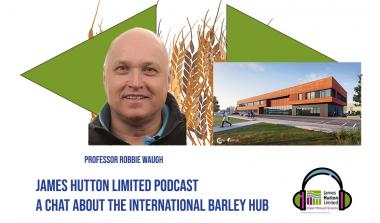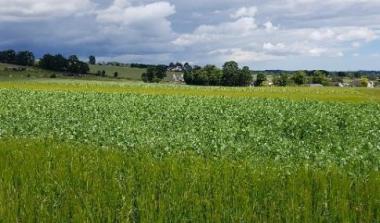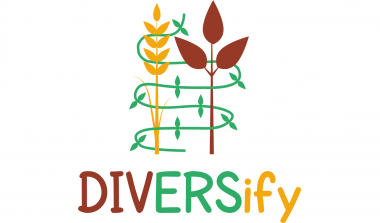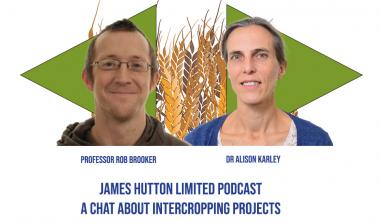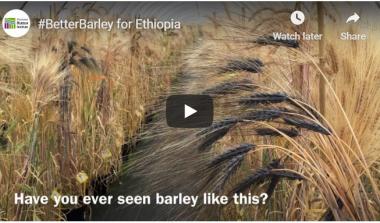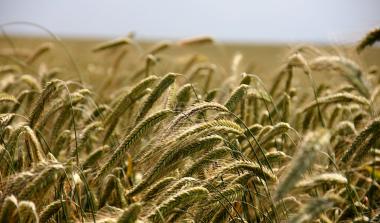Better Barley
Thanks for your interest in #BetterBarley
The James Hutton Institute is at the forefront of scientific progress where barley is concerned. It is the UK’s only centre of expertise for the UK’s second largest crop, which is grown on about half of Scotland’s arable land. James Hutton Limited harnesses scientific expertise and resources from the James Hutton Institute to provide research and consultancy services for commercial organisations from a wide range of industrial sectors.
The following page contains all the information we shared with our stand visitors and social media followers for Arable Scotland 2021 and Cereals 2021 - all in one place for your convenience and future reference. We can also email you a copy if you wish. If you have any further questions or comments about the work of the Hutton group, please contact us.

Visualisation of the International Barley Hub & Advanced Plant Growth Centre at the James Hutton Institute, Dundee
Breaking Ground on the International Barley Hub
Plans are fully in motion to bring the International Barley Hub to life at the James Hutton Institute, Dundee, following the transformational capital investment of £45m by the UK Government and £17m by the Scottish Government via the Tay Cities Region Deal.
The Role of the International Barley Hub
The International Barley Hub seeks to secure the long-term future of the barley sector by conducting research that will assist in the development of new varieties and growing systems that can cope with future climate change, plus new uses for the crop. It is underpinned by decades of research at the James Hutton Institute and partners, including the University of Dundee, Scotland’s Rural College (SRUC) and Abertay University, the Rowett Institute and others.
Appointment of Director
Professor Robbie Waugh, a renowned barley geneticist based in Dundee, has been appointed Director of Research of the International Barley Hub (IBH).
Professor Waugh’s research explores areas of biology that have resulted in historical advances during the process of domestication, adaptation, and breeding of cereal crops. He was elected a fellow of the Royal Society of Edinburgh in 2013, and his research regularly features in high profile scientific publications. Professor Waugh said: “I’m delighted to take on the challenge of leading IBH. Barley is one of the UK’s most valuable crops and investing in barley research can yield great returns and is likely to have a significant economic impact.”
The James Hutton Institute is the UKs only centre of expertise dedicated to barley research and promotes the use of both traditional and contemporary methods of breeding in combination with fundamental genetic discoveries and research, to assist in the development of new varieties and growing systems that improve barley productivity, resistance to pests and diseases and resilience to climate change.
Find out more at https://www.barleyhub.org/ or in the podcast below.
Supporting Crop Mixtures to become Permanent Fixtures
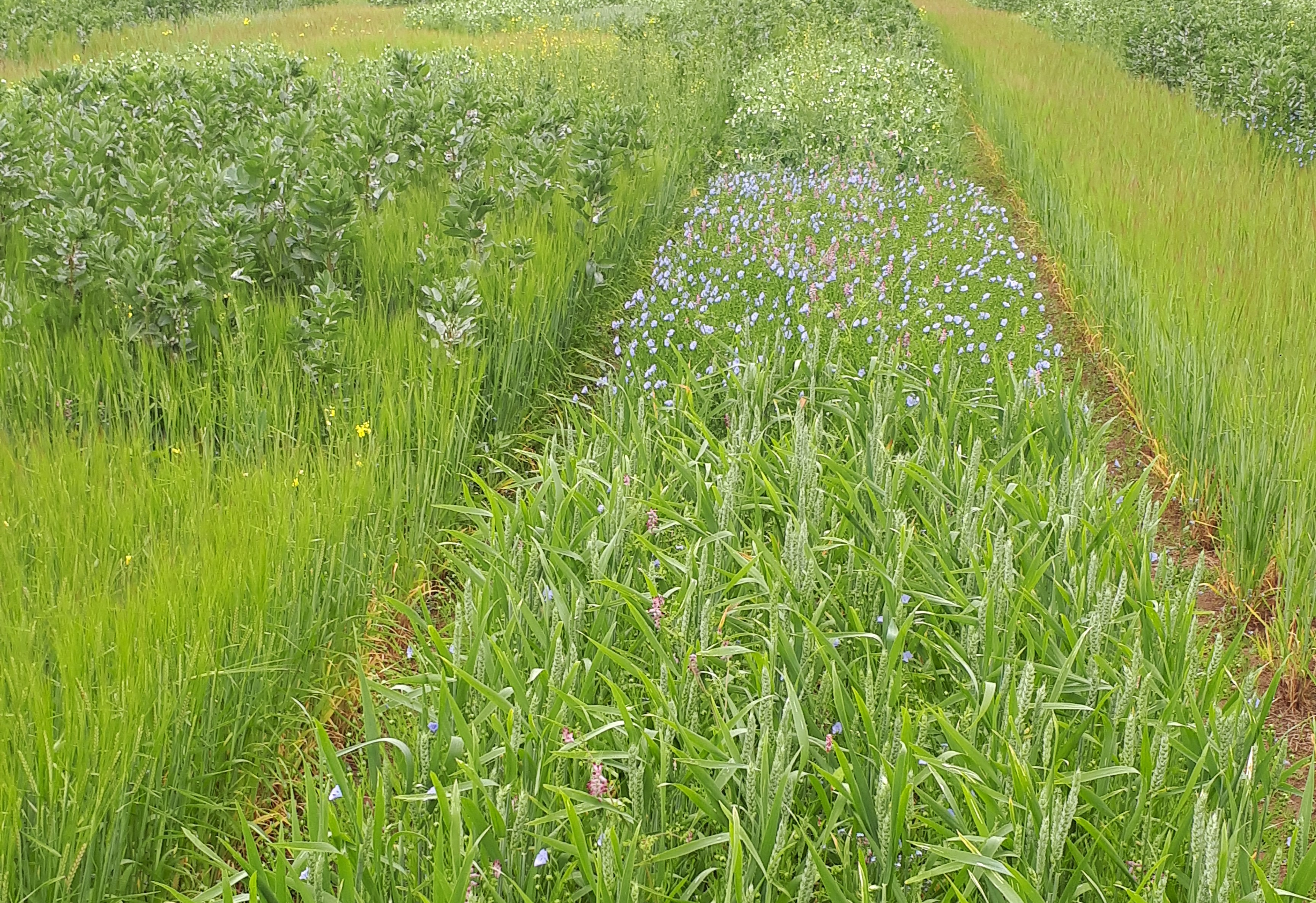 Researchers at the James Hutton Institute have been playing a vital role in supporting the development of intercropping, allowing farming and its associated industries to reap more than they would from raising two separate crops.
Researchers at the James Hutton Institute have been playing a vital role in supporting the development of intercropping, allowing farming and its associated industries to reap more than they would from raising two separate crops.
Like many farming practices, intercropping is not a novel concept, but a thorough investigation of intercropping and its practices demonstrates that mixing and growing two or more crops together, offers a huge number of benefits to the sustainability and future of farming. James Hutton Institute researchers, with support from government, industry and independent funding bodies, have been studying the challenges of intercropping – from what to sow and how to sow it, to effective harvesting and how to maximise end use, through several projects.
The potential benefits of intercropping and their role in finding solutions to global farming issues include improving soil health/carbon/drainage/nutrients/structure/storage/resilience, insect diversity, reduced inputs (reduced costs), the potential for increased and more stable yield and weed control plus, carry over benefits to mixed farming and financial benefits from subsidy regimes and premiums for reduced carbon … these are just a few.
Two recent International Barley Hub projects have been pivotal in advancing industry knowledge and understanding of intercropping and one has even started ‘em young!
SEAMS
Funded by the Esmée Fairbairn Foundation, and coordinated by the James Hutton Institute, the SEAMS project aims to develop, promote and implement crop species mixtures as a sustainable crop production system for Scotland and, as a resource for knowledge exchange on food production, agricultural ecology and environmental sustainability.
The project has engaged several trial sites throughout Scotland, the results of trials contributing to advice and guidance for farmers including how to tailor the use of crop mixtures to different locations. There is a participatory approach, especially with respect to deciding the crop mixtures to be trialled.
The trial sites also lend themselves to being a platform for education to demonstrate how food is produced, the role of biodiversity and sustainability, getting kids involved and tackling the all too familiar disconnect from the food they eat to how it is produced. Other groups have visited too including fellow farmers, food buyers and producers and policy makers.
There are several online resources available to find out more about SEAMS. Please visit this web link.
The SEAMS project is also seeking further network sites (must be in Scotland) and any farmers interested in participating should contact Prof. Rob Brooker.
Diversify
Now complete, the DIVERSify project, worked to understand how to optimise the performance of crop species mixtures or ‘plant teams’ to improve yield stability, reduce losses to weeds, pests and diseases, and enhance resilience to environmental change. The project received funding from the European Union’s Horizon 2020 research and innovation programme.
Together, 23 partners, including researchers from James Hutton Institute, farmers and other stakeholders, developed evidence and guidance on how to improve the productivity and sustainability of European agriculture through the application of ecological concepts.
The findings are superbly laid out with other resources online at www.plant-teams.org. For farmers and agronomists, results are summarised into agronomy, resilience and ecosystem services and practical experience and innovation. Policy makers can delve further into the evidence on how plant teams can contribute towards policy targets, such as input reduction, resilience to climate change or rural innovation and there is also an online support tool, designed to provide information that will help in making decisions about crop combinations, varieties and management types in different regions and cropping systems.
GridScore - Trait Data Collection using Modern Apps
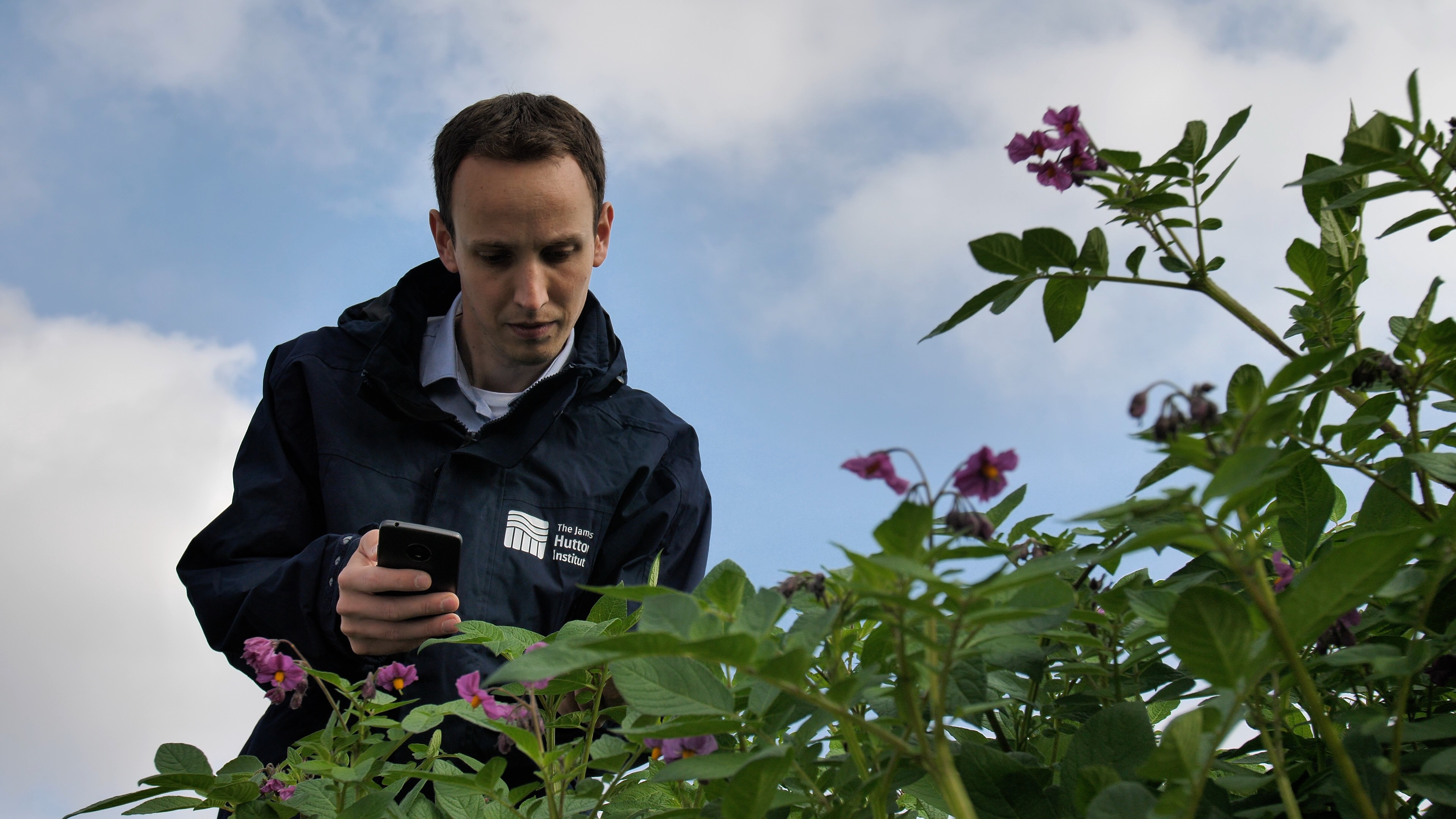 GridScore is a newly available, free to download app, from the Software Development Group at the James Hutton Institute. Designed to be used with personal mobile devices, GridScore utilises existing sensors and features such as geographic positioning, photo capabilities and audio comments directly translated into text, to simplify the trait data collection process for breeders during trials.
GridScore is a newly available, free to download app, from the Software Development Group at the James Hutton Institute. Designed to be used with personal mobile devices, GridScore utilises existing sensors and features such as geographic positioning, photo capabilities and audio comments directly translated into text, to simplify the trait data collection process for breeders during trials.
Manual phenotypic data collection has a long history - from hand-written notes and printed field plans to digital spreadsheets. These methods are all prone to errors but the bespoke nature of GridScore addresses potential issues such as number swaps, typos and bad handwriting, with valid data ranges and predefined lists of options to reduce the opportunity for mistakes. The removal of hand-written notes also eliminates the need for a dedicated digitisation step.
GridScore creator, Sebastian Raubach, says: “GridScore simplifies trait data collection by taking a well-known and liked approach and enhancing it with digital goodness! An overview field plan acts as the main data input screen just like a printed field plan. Data is collected by selecting the plot of interest and selecting the phenotypic values for each trait by either picking a date, a predefined value or by entering data directly. Once data has been scored for a plot, the field plan is updated and shows your progress as you collect more data. It is really very simple to use and saves a lot of time, minimising any potential for errors.”
GridScore is free and available at https://ics.hutton.ac.uk/gridscore or on the Google Play Store, just search for “GridScore”. For more information about GridScore or the work of the Software Development Group at the James Hutton Institute, contact Sebastian Raubach.
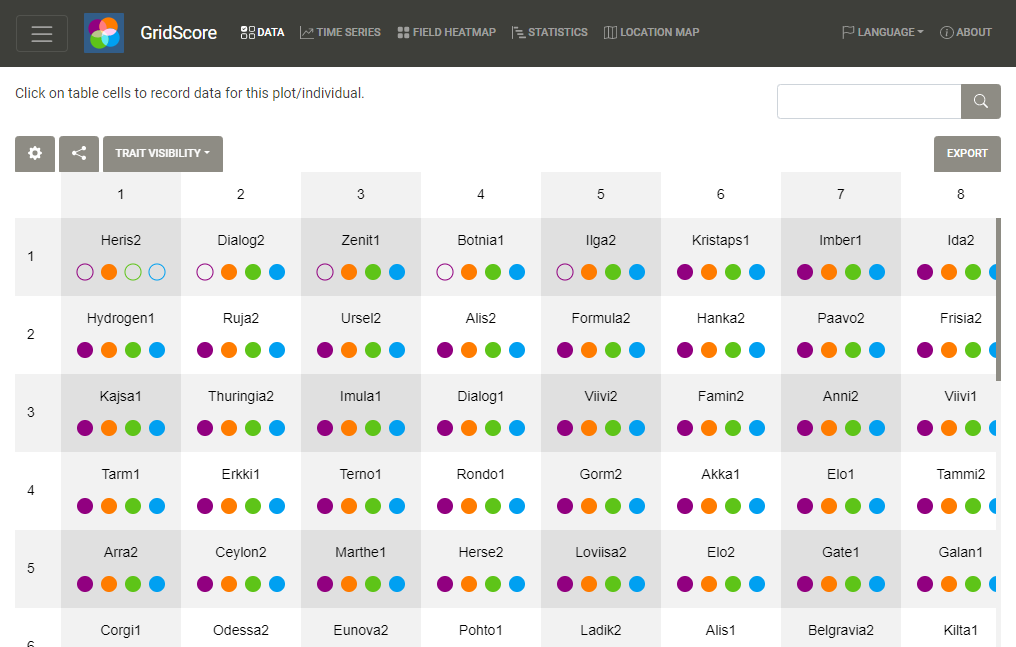
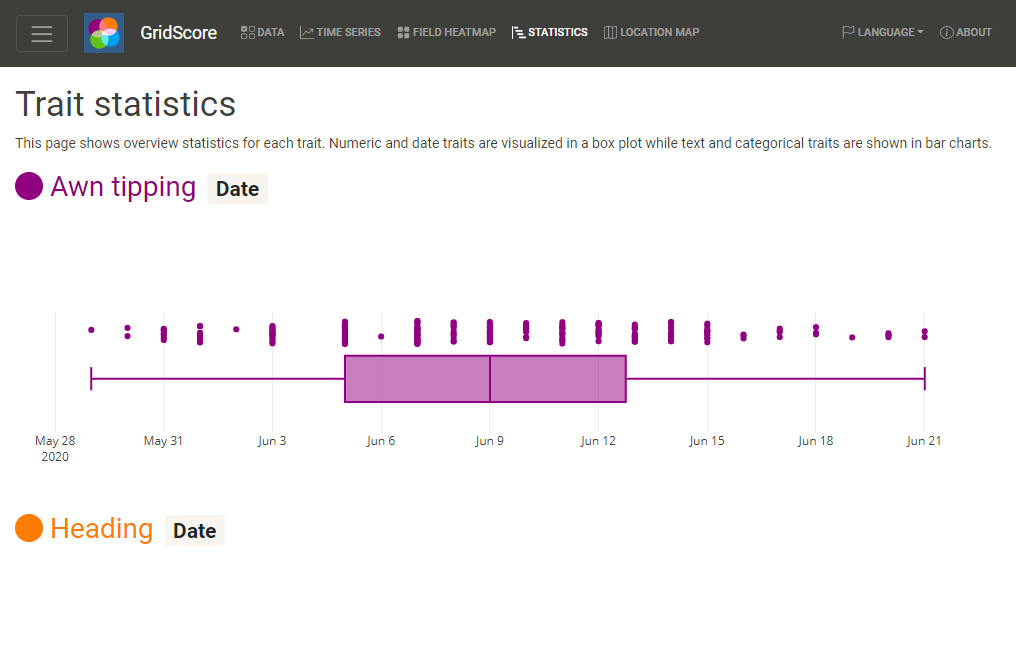
Ethiopian Barley
During the last century, expeditions to collect and conserve barley from across wide range of environments in which domestication and subsequent cultivation took place, have resulted in over 400,000 accessions stored in global genebanks. With the dual challenges of climate change and population growth, more sustainable and resilient crop production is required, and recently researchers have turned to these large collections as sources of new variation for future breeding.
Barley is one of the main cereal crops grown in Ethiopia, while it is a staple food crop for over 4.5 million smallholder farmer households and is grown across a wide range of environments, yields are low at around 1.5 tonnes per hectare. Because Ethiopia is the largest barley producer in Sub-Saharan Africa, the crop plays a major role in the Ethiopian’s Government plans to alleviate poverty, as an export to improve the balance of payments. The key challenge is to maximise production on farms, sustainably, while conserving and protecting valuable natural resources.
As part of UK Global Challenges Research Fund, the James Hutton Institute and University of Dundee were awarded funding for Mr. Girma Fana, an Ethiopian Barley Breeder to study for a PhD in the UK.
As part of this PhD study over 300 barley accessions, collected from across Ethiopia and Eritrea have been assembled giving some fantastic examples of variation. To gain a deeper scientific understanding of the extent of local barley genetic diversity and adaptation, Girma, along with support from James Hutton Institute colleagues, has genetically characterised the collection using gene based genetic markers. This provides the means to develop and implement breeding tools for use ‘in country’ to address sustainable crop production and varietal development and on his return home to Ethiopia, Dr. Girma Fana will play a key role in realising long term scientific and practical impacts in the region.
Contacts Girma Fana, Dr Joanne Russell, Prof. Robbie Waugh, Prof. Claire Halpin.

Examples of the spike variation within the collection. L-R Purple, yellow, white, tan/red, blue, black.


